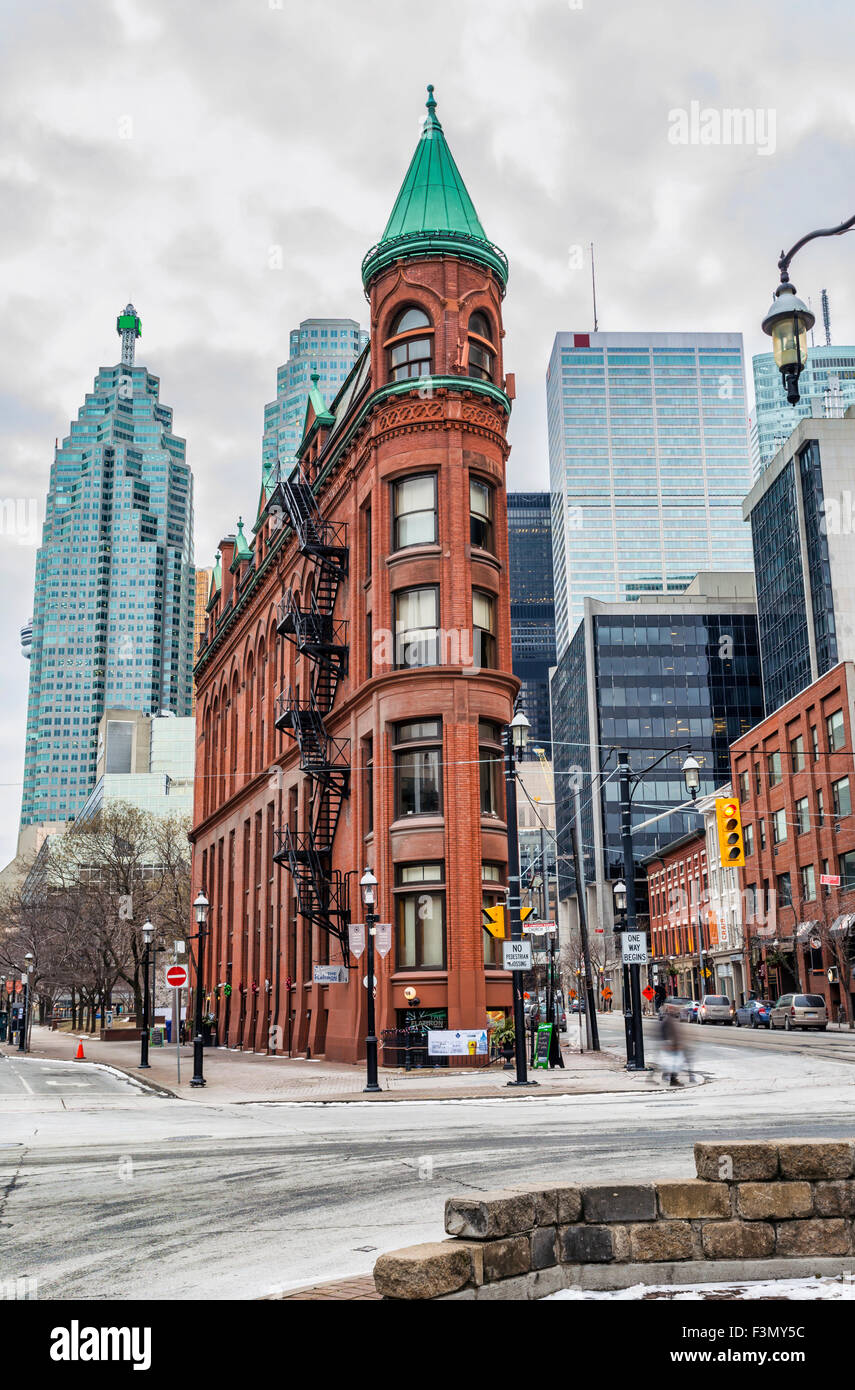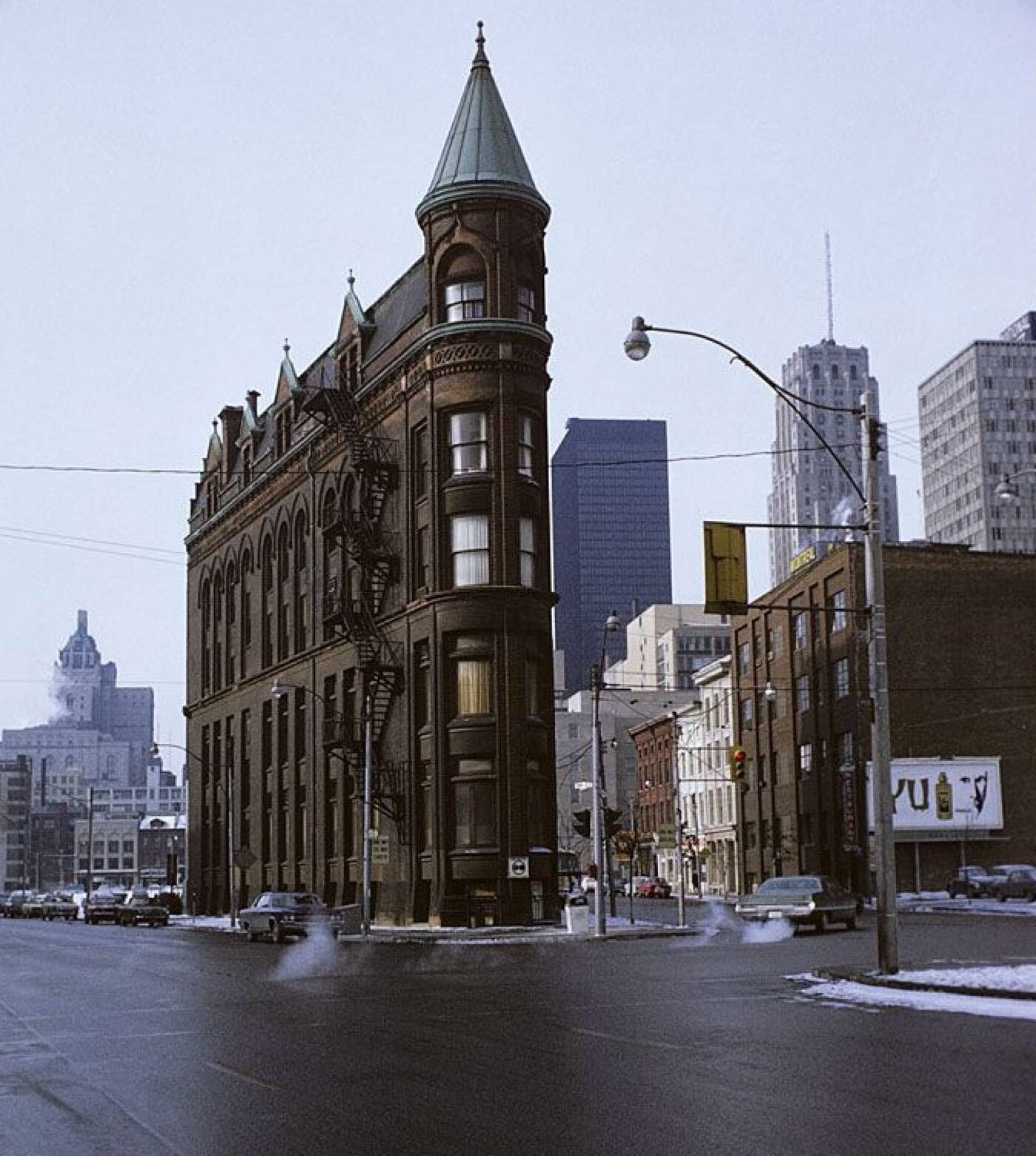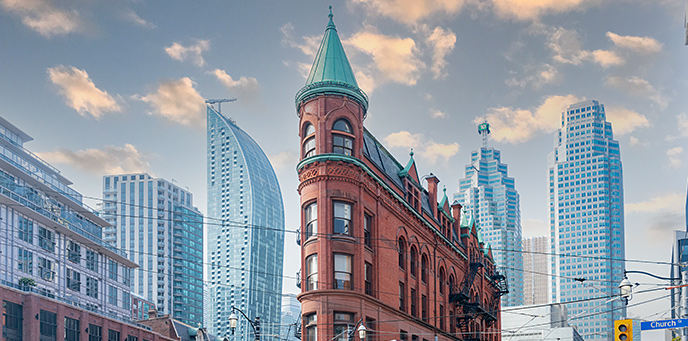Visiting the Gooderham Building: Weather and the Best Days to Experience It.: Seasonal Weather and Close-by Spots Can Make It Memorable.}
Visiting the Gooderham Building: Weather and the Best Days to Experience It.: Seasonal Weather and Close-by Spots Can Make It Memorable.}
Blog Article
Discover the Rich Background Behind the Gooderham Building in Toronto
The Gooderham Building, an exemplary manifestation of Richardsonian Romanesque style in Toronto, has a fabled past that expands past its striking red block façade. Commissioned by the significant Gooderham and Worts distillery in 1891, this structure has played a critical duty in forming the metropolitan landscape of the St. Lawrence Market area.

Beginnings of the Gooderham Building
Building a long-term legacy, the Gooderham Building, likewise called the Flatiron Structure, became an icon of Toronto's building advancement in the late 19th century. The structure's beginnings map back to 1891 when it was commissioned by the Gooderham and Worts distillery, among copyright's largest distilling firms. Developed by engineer David Roberts Jr. Gooderham Building address., the framework was distinctly placed at the junction of Front and Wellington Streets, making use of a triangular great deal developed by the convergence of these roads
The structure's building made use of neighborhood red block and terracotta, developing a distinct aesthetic that complemented the growing cityscape. Originally intended to house the Gooderham and Worts offices, the structure stood for the success of the distillery, which had come to be a considerable factor to Toronto's economy. Significantly, the conclusion of the Gooderham Building accompanied a period of fast urbanization that characterized the era.
The establishment of this architectural gem not only showcased innovative layout but also laid the groundwork for future advancements in Toronto. Today, it stands as a testament to the city's abundant background and flexibility, remaining to draw in visitors and admirers from around the world.
Architectural Relevance
The architectural significance of the Gooderham Building prolongs past its unique flatiron form, mirroring the ingenious spirit of late 19th-century style. Completed in 1892, the framework exhibits the Richardsonian Romanesque design, defined by its robust masonry, rounded arcs, and complex outlining. The strong use contrasting materials, specifically the cozy red brick and limestone accents, boosts its aesthetic charm and demonstrates the workmanship of the age.
The structure's three-story layout is noteworthy for its harmonious percentages and stylish cornice, which contribute to its iconic shape against the Toronto sky line. The narrow lot on which it stands postured one-of-a-kind obstacles, yet the engineers, in this instance, created a structure that took full advantage of the available area while maintaining visual balance.
Additionally, the Gooderham Structure is a testament to the versatility of building design in city environments. Its enduring presence among contemporary growths illustrates the value of preserving historical architecture as a way of recognizing a city's past. Today, it stays a cherished spots, mirroring both the architectural fads of its time and the developing narrative of Toronto as a lively urban facility.
Function in Toronto's Development
Arising as a principal in Toronto's urban landscape, the Gooderham Structure contributed dramatically to the city's development throughout the late 19th century. Constructed in 1892, this famous towers represented not only the building passions of the moment but likewise the expanding economic landscape of Toronto. The building was at first made to work as a storehouse for the Gooderham and Worts distillery, which was just one of the biggest distilleries in the British Realm. Its tactical location at the intersection of Front and Wellington Streets assisted in the activity of items and solutions, emphasizing the area's significance in the city's business activities.
As the city expanded, the Gooderham Building came to be a vital part of the St. Lawrence Market location, which was a center of profession and commerce. Its distinct architectural style and famous existence drew attention, influencing the design of subsequent buildings in the vicinity. In addition, the structure's survival through various economic changes and city growths mirrors the strength and versatility of Toronto's historic landscape. Essentially, the Gooderham Structure is not simply an architectural site; it played a pivotal function in shaping Toronto's identification and financial growth throughout a transformative duration webpage in its history.
Cultural Impact and Heritage
Gooderham Building's distinctive architectural style and historic significance have actually left an enduring mark on Toronto's cultural landscape. As one of the city's most identifiable spots, its distinct flatiron form and detailed brickwork exhibit the Victorian building trends of the late 19th century. This structure not only acts as an aesthetic support in the St. Lawrence neighborhood but likewise symbolizes the spirit of a burgeoning city during an era of financial growth.
The structure has become a symbol of Toronto's abundant history, motivating regional artists and photographers that look for to record its charm. Its presence has actually cultivated a feeling of area identification, adding to the narrative of urban development. The Gooderham Structure has played a crucial function in the tourism industry, attracting visitors anxious to explore its storied past and building appeal.
Along with its aesthetic charm, the structure encapsulates a story of resilience and adaptation, as it has actually transitioned with different uses over the decades - Gooderham Building address. Thus, the Gooderham Structure stands not only as a monolith of building value yet also as a testament to the evolving cultural heritage of Toronto

Repair and Conservation Initiatives
Numerous remediation and preservation efforts have actually been undertaken to guarantee the Gooderham Building remains an essential part of Toronto's architectural heritage. Originally completed in 1892, the structure has actually undergone considerable remodellings to attend to architectural worries while maintaining its historical stability. One of the most significant repair occurred in the late 20th century when the building was meticulously refurbished to satisfy contemporary safety and security requirements without endangering its original design elements.
These efforts included fixing the unique red-brick façade, restoring the famous triangular form, and maintaining the complex masonry details. Additionally, the building's inside has actually seen mindful updates that respect its historical value, making certain that original functions such as wood beam of lights and attractive moldings are preserved.
The Gooderham Building is now safeguarded as a designated heritage building under the Ontario Heritage Act, which aids protect it from unacceptable changes. Neighborhood engagement has played an important duty in these conservation initiatives, with regional campaigning for teams increasing recognition regarding the building's historical value. Consequently, the Gooderham Structure stands not only as a useful space however additionally as a testament to Toronto's abundant architectural history and sustaining social tradition.
Final Thought

Please visit one of our local supporters - Gamerama And The Repair Store - Iphone Repair Shop Toronto
Report this page